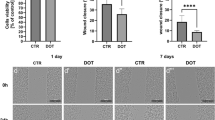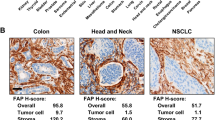Abstract
The purpose of this study was to label human monocytes with Gadofluorine M by simple incubation for subsequent cell depiction at 1.5 and 3 T. Gadofluorine M displays a high r1 relaxivity and is spontaneously phagocytosed by macrophages. Human monocytes were incubated with Gadofluorine M-Cy at varying concentrations and incubation times and underwent MR imaging at 1.5 and 3 T at increasing time intervals after the labeling procedure. R1-relaxation rates and r1 relaxivities of the labeled cells and non-labeled controls were determined. Cellular contrast agent uptake was examined by fluorescence microscopy and quantified by ICP-AES. Efficient cell labeling was achieved after incubation of the cells with 25 mM Gd Gadofluorine M for 12 h, resulting in a maximal uptake of 0.3 fmol Gd/cell without impairment of cell viability. Fluorescence microscopy confirmed internalization of the fluorescent contrast agent by monocytes. The r1 relaxivity of the labeled cells was 137 mM−1s−1 at 1.5 T and 80.46 mM−1s−1 at 3 T. Imaging studies showed stable labeling for at least 7 days. Human monocytes can be effectively labeled for MR imaging with Gadofluorine M. Potential in vivo cell-tracking applications include targeting of inflammatory processes with Gadofluorine-labeled leukocytes or monitoring of stem cell therapies for the treatment of arthritis.






Similar content being viewed by others
References
Kraitchmann DL, Heldman AW, Atalar E, Amado LC, Martin BJ, Pittenger MF, Hare JM, Bulte JW (2003) In vivo magnetic resonance imaging of mesenchymal stem cells in myocardial infarction. Circulation 107:2290–2293
Zhang ZG, Jiang Q, Zhang R, Zhang L, Wang L, Arniego P, Ho KL, Chopp M (2003) Magnetic resonance imaging and neurosphere therapy of stroke in rat. Ann Neurol 53:259–263
Soria B, Roche E, Berna G, Leon-Quinto T, Reig JA, Martin F (2000) Insulin-secreting cells derived from embryonic stem cells normalize glycemia in streptozocin-induced diabetic mice. Diabetes 49:157–162
Daldrup-Link HE, Rudelius M, Piontek G, Metz S, Brauer R, Debus G, Corot C, Schlegel J, Link TM, Peschel C, Rummeny EJ, Oostendorp RA (2005) Migration of iron oxide-labeled human hematopoetic progenitor cells in a mouse model: in vivo monitoring with 1.5-T MR Imaging equipment. Radiology 234:197–205
Mao JJ (2005) Stem-cell-driven regeneration of synovial joints Biol Cell 97(5):289–301
Frank JA, Miller BR, Arbab AS, Zywicke HA, Jordan EK, Lewis BK, Bryant Jr LH, Bulte JWM (2003) Clinically applicable labeling of mammalian stem cells by combining superparamagnetic iron oxides and transfection agents. Radiology 228:480–487
Daldrup-Link HE, Rudelius M, Oostendorp RA, Jacobs VR, Simon GH, Gooding C, Rummeny EJ (2005) Comparison of iron oxide labeling properties of hematopoietic progenitor cells from umbilical cord blood and from peripheral blood for subsequent in vivo tracking in a xenotransplant mouse model. Acad Radiol 12:502–510
Bulte JW, Kraitchman DL (2004) Iron oxide MR contrast agents for molecular and cellular imaging. NMR Biomed 17:484–499
Daldrup-Link HE, Rudelius M, Oostendorp RA, Settles M, Piontek G, Metz S, Rosenbrock H, Keller U, Heinzmann U, Rummeny EJ, Schlegel J, Link TM (2003) Targeting of hematopoietic progenitor cells with MR contrast agents. Radiology 228:760–767
Arbab AS, Yocum GT, Kalish H, Jordan EK, Anderson SA, Khakoo AY, Read EJ, Frank JA (2004) Efficient magnetic cell labeling with protamine sulfate complexed to ferumoxides for cellular MRI. Blood 104:1217–1223
Metz S, Bonaterra G, Rudelius M, Settles M, Rummeny EJ, Daldrup-Link HE (2004) Capacity of human monocytes to phagocytose approved iron oxide MR contrast agents in vitro. Eur Radiol 14:1851–1858
Foster-Gareau P, Heyn C, Alejski A, Rutt BK (2003) Imaging single mammalian cells with a 1.5 T clinical MRI scanner. Magn Reson Med 49:968–971
Arbab AS, Bashaw LA, Miller BR, Jordan EK, Bulte JW, Frank JA (2003) Intracytoplasmic tagging of cells with ferumoxides and transfection agent for cellular magnetic resonance imaging after cell transplantation: methods and techniques. Transplantation 76:1123–1130
Matuszewski L, Persigehl T, Wall A, Schwindt W, Tombach B, Fobker M, Poremba C, Ebert W, Heindel W, Bremer C (2005) Cell tagging with clinically approved iron oxides: feasibility and effect of lipofection, particle size, and surface coating on labeling efficiency. Radiology 235:155–161
Bulte JW, Douglas T, Witwer B, Zhang SC, Strable E, Lewis BK, Zywicke H, Miller B, van Gelderen P, Moskowitz BM, Duncan ID, Frank JA (2001) Magnetodendrimers allow endosomal magnetic labeling and in vivo tracking of stem cells. Nat Biotechnol 19:1141–1147
Anderson SA, Lee KK, Frank JA (2006) Gadolinium-fullerenol as a paramagnetic contrast agent for cellular imaging. Invest Radiol 41(3):332–338
Daldrup-Link HE, Rudelius M, Metz S, Piontek G, Pichler B, Settles M, Heinzmann U, Schlegel J, Oostendorp RA, Rummeny EJ (2004) Cell tracking with gadophrin-2: a bifunctional contrast agent for MR imaging, optical imaging, and fluorescence microscopy. Eur J Nucl Med Mol Imaging 31(9):1312–1321, Sep
Hoehn M, Kustermann E, Blunk J, Wiedermann D, Trapp T, Wecker S, Focking M, Arnold H, Hescheler J, Fleischmann BK, Schwindt W, Buhrle C (2002) Monitoring of implanted stem cell migration in vivo: a highly resolved in vivo magnetic resonance imaging investigation of experimental stroke in rat. Proc Natl Acad Sci USA 99:16267–16272
Arbab AS, Yocum GT, Wilson LB, Parwana A, Jordan EK, Kalish H, Frank JA (2004) Comparison of transfection agents in forming complexes with ferumoxides, cell labeling efficiency, and cellular viability. Mol Imaging 3:24–32
Bulte JW, Zhang S, van Gelderen P, Herynek V, Jordan EK, Duncan ID, Frank JA (1999) Neurotransplantation of magnetically labeled oligodendrocyte progenitors: magnetic resonance tracking of cell migration and myelination. Proc Natl Acad Sci USA 96:15256–15261
Zelivyanskaya ML, Nelson JA, Poluektova L, Uberti M, Mellon M, Gendelman HE, Boska MD (2003) Tracking superparamagnetic iron oxide labeled monocytes in brain by high-field magnetic resonance imaging. J Neurosci Res 73:284–295
Barkhausen J, Ebert W, Heyer C, Debatin JF, Weinmann HJ (2003) Detection of atherosclerotic plaque with Gadofluorine-enhanced magnetic resonance imaging. Circulation 108:605–609
Misselwitz B, Platzek J, Weinmann HJ (2004) Early MR lymphography with gadofluorine M in rabbits. Radiology 231:682–688
Sirol M, Itskovich VV, Mani V, Aguinaldo JG, Fallon JT, Misselwitz B, Weinmann HJ, Fuster V, Toussaint JF, Fayad ZA (2004) Lipid-rich atherosclerotic plaques detected by gadofluorine-enhanced in vivo magnetic resonance imaging. Circulation 109:2890–2896
Bendszus M, Wessig C, Schutz A, Horn T, Kleinschnitz C, Sommer C, Misselwitz B, Stoll G (2005) Assessment of nerve degeneration by gadofluorine M-enhanced magnetic resonance imaging. Radiology 57:388–395
Park KH, Sung WJ, Kim S, Kim DH, Akaike T, Chung HM (2005) Specific interaction of mannosylated glycopolymers with macrophage cells mediated by mannose receptor. J Biosci Bioeng 99:285–289
Merbach A, Toth E (2001) The chemistry of contrast agents in medical Magnetic resonance imaging. Wiley, Chichester, UK
Rudelius M, Daldrup-Link HE, Heinzmann U, Piontek G, Settles M, Link TM, Schlegel J (2003) Highly efficient paramagnetic labelling of embryonic and neuronal stem cells. Eur J Nucl Med Mol Imaging 30:1038–1044
Weissleder R, Cheng HC, Bogdanova A, Bogdanov Jr A (1997) Magnetically labeled cells can be detected by MR imaging. J Magn Reson Imaging 7:258–263
Riviere C, Boudghene FP, Gazeau F, Roger J, Pons JN, Laissy JP, Allaire E, Michel JB, Letourneur D, Deux JF (2005) Iron oxide nanoparticle-labeled rat smooth muscle cells: cardiac MR imaging for cell graft monitoring and quantitation. Radiology 235:959–967
Kostura L, Kraitchman DL, Mackay AM, Pittenger MF, Bulte JW (2004) Feridex labeling of mesenchymal stem cells inhibits chondrogenesis but not adipogenesis or osteogenesis. NMR Biomed 17:513–517
Author information
Authors and Affiliations
Corresponding author
Additional information
Both authors, Tobias D. Henning and Olaf Saborowski, contributed equally to this manuscript.
This work was supported in part by a Academic Senate grant from the University of California of San Francisco (D-L), stipends from the German Research Association (TDH) and from the Schering AG (OS), by the US National Institutes of Health grants HL-24136 and HL 59157 from the National, Heart, Lung, and Blood Institute, and CA082923 from the National Cancer Institute (DMcD).
Rights and permissions
About this article
Cite this article
Henning, T.D., Saborowski, O., Golovko, D. et al. Cell labeling with the positive MR contrast agent Gadofluorine M. Eur Radiol 17, 1226–1234 (2007). https://doi.org/10.1007/s00330-006-0522-9
Received:
Revised:
Accepted:
Published:
Issue Date:
DOI: https://doi.org/10.1007/s00330-006-0522-9




